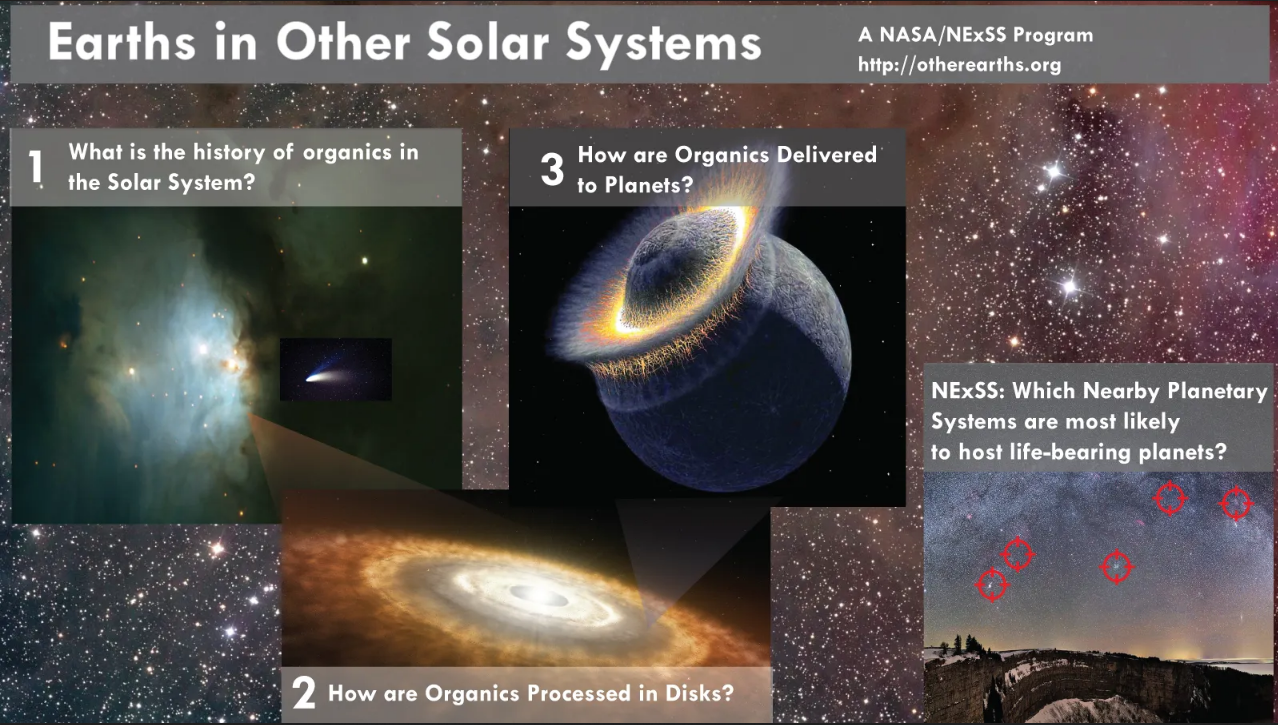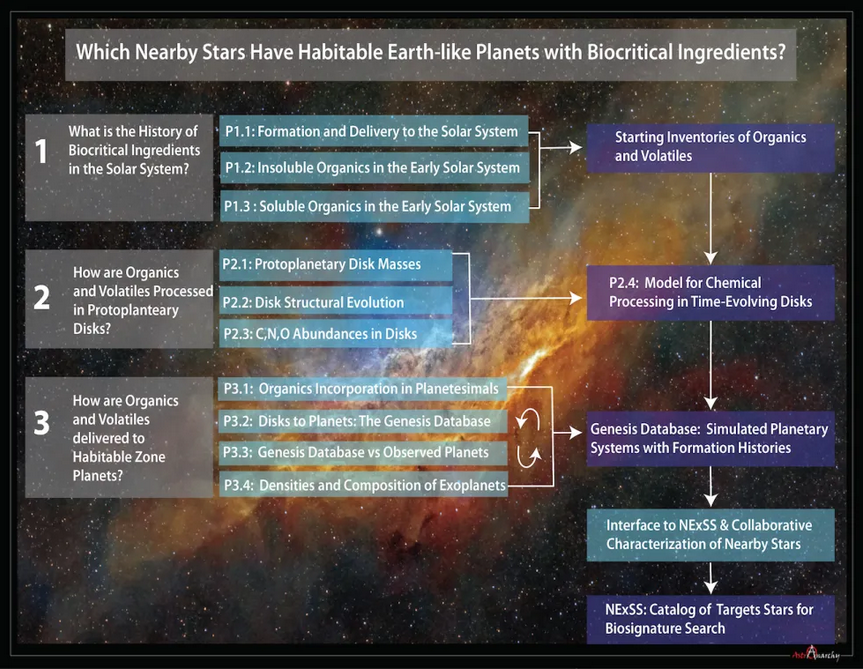Project EOS
Project Eos
Earths in Other Solar Systems is a NASA-funded astrobiology research program aiming to understand how and where habitable, earth-like planets with biocritical ingredients (volatiles and organics) form. EOS was launched in 2015 and it is now, in 2021, in its final year. While Project EOS is nearing its end, our new NASA/ICAR-funded project Alien Earths builds directly on results, methods, and data from EOS.
EOS is part of NASA‘s Nexus for Exoplanetary System Science (NExSS) program, which carries out coordinated research toward to the goal of searching for and determining the frequency of extrasolar planets with atmospheric biosignatures in the Solar neighborhood.
Our interdisciplinary EOS team includes astrophysicists, planetary scientists, cosmochemists, material scientists, chemists and physicists.
The Principal Investigator of EOS is Daniel Apai (University of Arizona). The project’s lead institutions are The University of Arizona‘s Steward Observatory and Lunar and Planetary Laboratory. The EOS Institutional Consortium consists of the Steward Observatory and the Lunar and Planetary Laboratory of The University of Arizona, the National Optical Astronomical Observatory, the Department of Geophysical Sciences at the University of Chicago, the Planetary Science Institute, and the Catholic University of Chile.

Over its 6-year lifetime, EOS led to over 140 refereed publications that are cited at a rate of ~2,000 citations/year; it has produced multiple novel, integrative tools as well as very large libraries of simulated planetary systems. EOS supported the studies and research of over twenty undergraduate and graduate students, and postdoctoral researchers. Many of the EOS postdoctoral researchers continue their careers as faculty or staff members in research universities and leading observatories.

